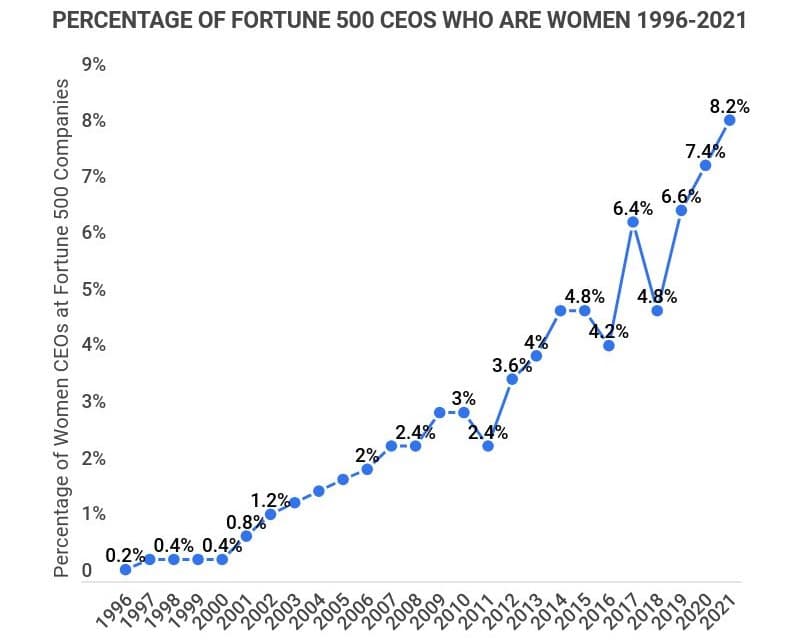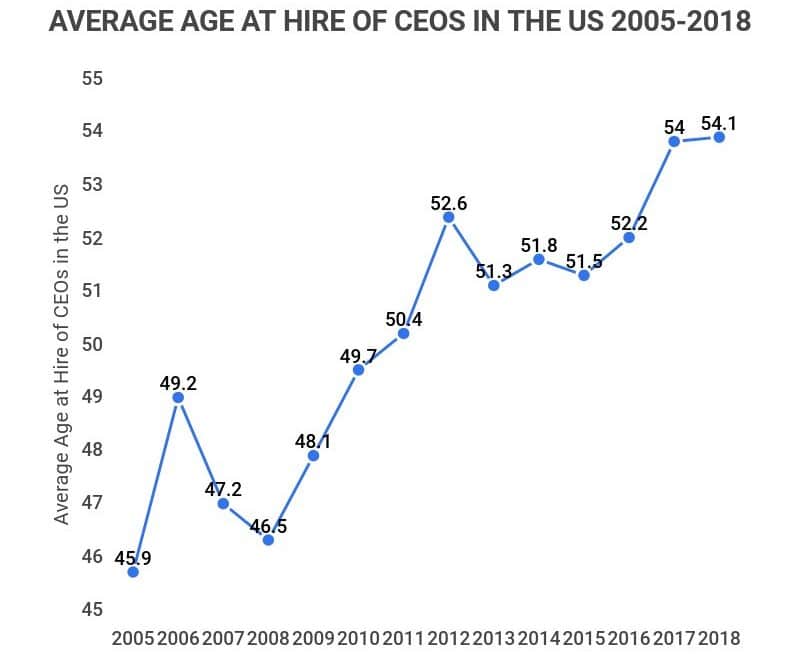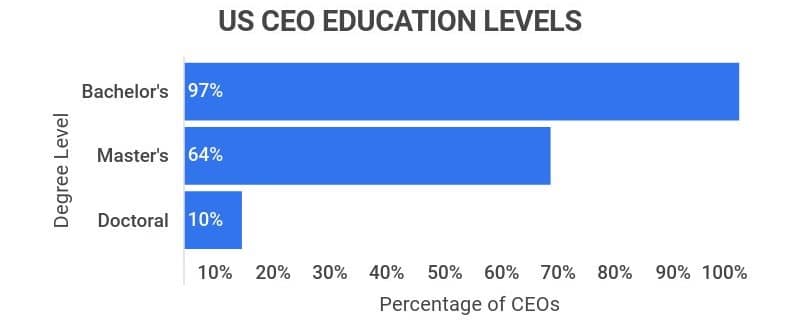- Workplace Statistics
- Time Management Statistics
- Employee Wellness Statistics
- Employment Discrimination Statistics
- Employee Recognition Statistics
- Employee Referral Statistics
- Workplace Violence Statistics
- Gamification Statistics
- Employee Feedback Statistics
- Agile Statistics
- Productivity Statistics
- Meeting Statistics
- Cell Phones At Work Statistics
- Social Media At Work Statistics
- Workplace Injury Statistics
- Workplace Stress Statistics
- Leadership Statistics
- Workplace Collaboration Statistics
- Job Satisfaction Statistics
- Paid Holiday Statistics
- Communication In The Workplace Statistics
- Wasting Time At Work Statistics
- 4-day Workweek Statistics
Leadership research summary. Leadership plays a huge role in the success of a business. From being able to direct employees to the right tasks, to keeping projects organized, adept leadership can go a long way.
With that in mind, it’s worth paying attention to statistics about leadership. Luckily, we’ve gathered all of the essential facts, our data analysis team found that:
-
79% of employees will quit due to a lack of appreciation.
-
While 83% of organizations believe it’s important to develop leaders at every level of the company, only 5% of businesses have implemented leadership development at all levels.
-
78% of business leaders actively and regularly focus on engaging with their employees.
-
Only 48% of employees view their company’s leadership as “high quality.”
-
Only 10% of people are natural leaders — another 20% show some qualities of basic managerial talent that can be cultivated into high-quality leadership.
-
US businesses spend $166 billion on leadership development each year — nearly half of the $366 billion that’s spent globally.
For further analysis, we broke down the data in the following ways:
Gender | Race | Age | Training | Challenges | Culture | Skills
General leadership statistics
Leadership is an essential skill for managers and top employees in any industry. However, that doesn’t necessarily mean leadership is easy to come by. To find out more about leadership in the workplace, here are some interesting general facts:
-
77% of businesses report that leadership is lacking.
While everyone recognizes the value of having strong leadership at every level of an organization, businesses struggle to find and develop leaders.
-
69% of employees say they would work harder if they felt their efforts were better recognized.
Employees who are made to feel that they’re appreciated and their work is recognized are more engaged and can help the company achieve its goals. Recognizing and appreciating employees is the job of management and other leaders in the organization.
-
Only 33% of employees report feeling engaged.
Employee engagement is critical to a company’s success, yet few employees feel like their leadership is supporting them in a way that boosts their engagement.
-
Companies with employee engagement are 22% more profitable.
This statistic should prompt all leaders to encourage engagement and do what is necessary to determine what would help their workforce be more productive.
Women in leadership statistics
Leadership positions in the workplace haven’t always been available to women, but we’ve come a long way within the past half a century. Today, women are in leadership roles all across the country, even if there’s still progress to be made.
-
In 1972, only 18% of managerial positions were held by women. By 2016, nearly 40% of all managers were women.
Women appear to be better represented in the workforce when it comes to holding leadership positions today than they were in the past.
-
Women account for only 20% of CEO positions.
While women account for nearly 40% of managers in companies, they only account for 20% of CEO positions, indicating there is a lower promotion rate for women when it comes to the highest leadership position in a company.
-
More than 10% of Fortune 500 companies are led by women.
Fortune Magazine reported that January 2023 was the first month that more than 10% of Fortune 500 companies have women at the helm, with 53 companies on the list having female CEOs.
The Fortune 500 list is 68 years old, making this a huge accomplishment that has been decades in the making. While women are making strides in the workforce and are showing greater representation when it comes to management positions, the evidence of a glass ceiling still exists, as the vast majority don’t advance to the top positions within companies.
-
74.2% of human resources managers are women, the highest rate of any management occupation.
While women have access to fewer leadership roles in general, some industries tend to have higher rates of women in leadership roles. Medical services, public relations, social service, and education and prime examples.
Percentage of women in management roles by management occupation
| Management Occupation | Percentage Of Women Employees |
|---|---|
| Human resources | 74.2% |
| Medical and health services | 72.3% |
| Public relations and fundraising | 70.9% |
| Social and community service | 70.5% |
| Education administration | 65.1% |
| Training and development | 58.5% |
| Advertising and promotions | 56.5% |
| Financial | 52.5% |
| Lodging | 52.2% |
Leadership and race statistics
Leadership roles have historically been out of reach for many people of color in the US. Now, even if many companies pursue diversity, POC Americans often feel as though they’re starting point is far behind their White counterparts. To dive deeper into leadership roles and race in the US, here are some essential statistics:
-
Since the Fortune 500 list was first established in 1955, there have only been 22 black CEOs of companies on the list.
Looking at the numbers of black people holding the highest positions in Fortune 500 companies, it’s clear that there is underrepresentation happening. One cause of this lack of diversity could be that not enough black people are put on management tracks early in their careers.
-
There are only six black CEOs in Fortune 500 companies as of May 2022.
IFF, Lowes, Qurate Retail, Walgreens Boots Alliance, Compass, and TIAA-CREF are the only companies that currently have black people in their CEO spots. Walgreens Boots Alliance and TIAA-CREF have black women holding this position.
-
The percentage of the 1,122 people in the Public Administration Executive Office and Legislative Bodies breaks down as below:
Percentage of people in the public administration executive office and legislative bodies by race
White 69.4% Black or African American 17.8% Asian 5% Hispanic or Latino 12.8% Not surprisingly, minorities of other races account for a much smaller percentage of the managerial and top positions in the workforce than their white counterparts in this BLS data.
-
The pay scale broken down by race and gender shows executive Pacific Islander men making the most while American Indian women executives make the least.
Breakdowns by gender and race at the executive level have some surprising insights, with women always faring worse than men and black and Hispanic men doing worse than other races. Interestingly, Pacific Islander men and Asian men make the most financially, but they’re poorly represented in the workforce.
When you shift the statistics to look at Manager/Supervisory level positions, still using the salary of white men as the basepoint, you see Asian men and women making more and all other categories falling below the salary of white men.
Leadership and age statistics
Your chances of landing a leadership role can also depend on your age, as many employers value experience when choosing leaders in the workplace. Here are some telling facts about how age impacts leadership positions in the workplace:
-
The average age of a CEO at the time of hire is 54.1, and the age of corporate leaders in both CEO and CFO positions has been on the rise.
In 2005, CEOs and CFOs’ average age was in the mid-40s, which has increased in the intervening years, and CEOs are now, on average, in their mid-50s while CFOs are more likely to be in their upper-40s.
-
Chief Executive Officers are typically well-educated.
A look at the top leadership position shows us that, across the globe, education is very important to people who are looking to obtain a leadership position in a company. Bachelor’s degrees are held by 97% of CEOs, 64% of them hold a Master’s degree or the equivalent (which includes MBAs), and 10% of all CEOs have a Doctorate degree.
Age and education continue to play a big role in the top leadership positions in companies. These two statistics parallel each other as it takes time to earn advanced degrees and progress to higher positions within companies, which would lead to an older leadership pool.
Leadership training statistics
Natural leaders do exist, but even they will excel far more when given proper training. In fact, training leaders is an essential part of any company’s hiring process. Here’s how we know:
-
Nearly 95% of learning organizations plan to increase or maintain their current investment in leadership development.
This is because leadership development is big business for educational groups. Globally, it’s a $366 billion industry with $166 billion of that being spent in the United States alone.
-
For every year a company delays leadership development, it costs 7% of their total annual sales.
Leadership development is critical in many ways throughout a company. By delaying development and not giving leaders a chance to advance and grow, the company is effectively cutting its profits by 7%.
-
79% of employees quit due to a lack of appreciation.
When leadership doesn’t effectively show appreciation to their employees, this creates serious disengagement and can prompt the premature exit of an employee. It’s critical that leaders learn how to better support their employees.
-
69% of millennials feel a lack of leadership development.
Millennials (people born between 1980 and 2000) are deeply ensconced in the workforce, and more and more baby boomers and even Gen Xers are leaving, which means the feelings of millennials are growing in importance for companies. It’s critical that companies respond to problems that are seen in leadership by this age group.
-
83% of business agree that leadership development is important at every level.
At a cognitive level, business and HR leaders understand that developing leaders internally is more economically sound and makes for a more robust company. However…
-
Only 5% of businesses have implemented leadership development at all levels.
This statistic supports what millennials are reporting. They reported that leadership is not being developed, and companies are facing some serious repercussions from this oversight.
Statistics on leadership challenges
Effective leadership in the workplace comes with many challenges, some of which can be anticipated, and some are unforeseen. However, knowing about and preparing for these challenges is essential for any company or person in a leadership position.
-
Health care expenditures at high-pressure companies are nearly 50% greater than other organizations.
High-stress jobs are costing companies and employees more than they realize when you factor in health care costs and the toll that takes on the individuals involved.
-
More than $500 billion is siphoned off from the U.S. economy due to workplace stress, according to the American Psychological Association.
This statistic points to an almost-crisis level of workplace stress in the United States, costing billions of dollars. Also, It’s holding corporations back from realizing potential success, and the American population is facing more stress-related illnesses and injuries.
-
60-80% of workplace accidents are attributed to stress.
A stressful work environment takes a huge toll on employees, not just on mental health and stress-related issues, but it’s also the cause of accidents in the workplace.
-
The World Health Organization recognizes burnout as an occupational phenomenon and classifies it as a disease.
Burnout is defined by the IDC-11 code as a syndrome conceptualized as resulting from chronic workplace stress that has not been successfully managed. Interestingly, this definition seems to suggest that there is a way to successfully manage workplace stress.
-
Up to 8% of national spending on health care and 120,000 deaths a year can be connected to workplace stress.
Workplace stress is a recognized condition that has become almost epidemic in the United States and around the globe. More solutions are necessary, and companies need to find ways to implement them to protect their employees, their bottom line, and the economy.
Leadership and corporate culture statistics
Leadership styles have to blend well with corporate culture in order for a company to succeed. With that in mind, we’ve gathered a few essential facts about leadership as it relates to corporate culture:
-
35% of American workers put company culture as a priority when job hunting.
The fact that one-third of workers would pass on a perfect job if the culture fit wasn’t there shows the importance of a quality work environment with good leadership at the helm.
-
Worldwide, only 13% of employees report being engaged at work, while in the United States, 32% of employees state that they’re engaged in their jobs.
This low level of engagement points to a lack of satisfaction with professional choices for many individuals.
-
Disengaged employees had a 37% higher absentee rate, suffered 49% more accidents, and made 60% more errors at work.
A disengaged workforce costs more than most companies realize. Boosting engagement and having the right management team in place pushes companies toward successful outcomes.
-
One in two (50%) people state that they’ve left a job at some point to get away from a bad manager.
There is a huge number of people who are reporting that they’ve experienced a bad manager. It begs the question of how many employees one bad manager can force out over the course of their career.
Leadership skills statistics
Leadership might seem like a skill in and of itself, but there are ways employees can show and improve their leadership skills. From strategic thinking to time management, we’ve provided extra facts and information about leadership skills:
-
There are five top skills of great leaders:
-
Self-development
-
Team development
-
Strategic thinking and acting
-
Ethical practice and civic-mindedness
-
Innovation.
Having these leadership skills can give you a competitive advantage when looking for a management or top-level position. They’re also skills that people in leadership positions should be looking to hone.
-
-
80% of employees are happy with their boss.
This statistic shows that leadership across the United States appears to be doing a good job, and employees are happy with their work.
Leadership FAQ
-
What percentage of the population are leaders?
10% of the population are natural leaders. Another 20% of people possess enough leadership traits to become great leaders with training and guidance.
Note that this Gallup study only looked at corporate leadership and management. While this probably serves as a decent proxy for leadership writ large, differences between political leaders, corporate leaders, sports leaders, and leaders in other spheres certainly exist. As such, rates of natural leadership vary depending on the context.
-
Is everyone capable of becoming a leader?
Yes, everyone is capable of becoming a leader. While certain personality profiles and interpersonal styles will be better suited to grow into a leadership position, some leaderships skills can be learned and practiced.
Practicing to become a better active listener, resolver of conflict, coach, and influencer will all help to make you a more authoratative and trustworthy leader. Additionally focusing on organization, strategic thinking, and long-term goal setting will help foster a mindset conducive to leadership.
Hard skills related to leadership are heavily industry- and role-dependent, as each leadership role will require its own skill set and industry knowledge. Most of all, though, leaders need to be experts who are able to communicate a vision and motivate action.
-
What makes a bad leader is close-mindedness, inconsistency, and poor communicative abilities. Bad leaders will fail to listen to new ideas that go against their way of thinking, fail to communicate a broader plan that has a suitable, well-defined role for everyone, and fail to recognize achievements made by individuals and teams.
Truly bad leaders will also blame others for their mistakes and will actively fight against natural tides of change from lower levels of the organization. Most of all, bad leaders lack the empathy to understand the views of those they hope to lead.
-
Why should the leadership of a company be a priority?
Leadership should be a priority because employees who work for good leaders will work harder. In turn, this will drive profits and company performance. In contrast, poor leaders can create stress which leads to workplace accidents and significant health problems for employees.
By focusing on good management and developing solid leadership skills in their team, companies can significantly improve their performance and the health of their employees.
-
What training opportunities are there for leaders?
Unfortunately, there are often few inexpensive training opportunities for leaders. Leadership training is big business for learning organizations, and these businesses are looking to increase their offerings. Sadly, only 5% of businesses have implemented leadership development at all levels. This means that companies are not readily offering training for leadership opportunities to their employees.
If you’re interested in becoming a leader, working in management, and reaching higher levels of professional success, then you can find training at most educational facilities. Taking your own education and training upon yourself can help open doors for you.
-
Are women and minorities offered the chance to be leaders?
Across the board, business is slow to accept women and minorities in top leadership positions. It seems as though there is some positive movement in this realm, but it is coming very slowly.
Part of the problem is the lack of leadership training at the early levels of their careers and the lack of business support for the professional advancement of women and minorities.
Conclusion
It’s clear that effective leadership is important to companies in many different regards, from retaining good employees to seeing employees put forth harder efforts and improving profits. It’s also clear that bad leadership is very detrimental to a company and can actually cause health problems around the globe and cost the healthcare system significantly.
This is why it’s so important that companies invest in leadership programs to build better leaders who understand and can respond to their ever-changing workforce.
Training leaders and building leadership skills are big businesses globally, yet few companies report that they’re taking these efforts or that they’re focused on leadership as much as they should be.
Some significant stats supporting the fact that business is changing with the times and keeping up with leading trends is the significantly disproportionate amount of women and minorities in top leadership and management positions within companies.
While it appears as if this is trending in the right direction, the movement is so slow and almost negligible, and each generation can only expect to see minor improvements in their work-life.
Shifting the focus to leadership and early training for women and minorities will not only improve the upper-level diversity of companies but will also boost profits, increase employee engagement, and further the company’s reputation.
References
-
Science for work. “Trust in Leadership – One Key Factor During Organizational Change’’. Accessed on August 11, 2021
-
HubSpot. ‘’11 Eye-Opening Statistics on the Importance of Employee Feedback [Infographic]’’. Accessed on August 11, 2021
-
Smarp. ‘’What Is the True Cost of Poor Employee Communication?’’. Accessed on August 11, 2021
-
Digital Commons. “The Role of Leadership Style in Employee Engagement’’. Accessed on August 11, 2021
-
Forbes. ‘’Leadership Development Is A $366 Billion Industry: Here’s Why Most Programs Don’t Work’’. Accessed on August 11, 2021
-
Ken Blanchard. ‘’Advance Your Leadership for the New World of Work’’. Accessed on August 11, 2021
-
Bloom Leadership. “INTERESTING STATISTICS ABOUT EFFECTIVE LEADERSHIP’’. Accessed on August 11, 2021
-
HRPA. “HR Millennials: Insights Into Your New Human Capital’’. Accessed on August 11, 2021
-
Harvard Business Review. “Proof That Positive Work Cultures Are More Productive’’. Accessed on August 11, 2021
-
APA. “Paying With Our Health’’. Accessed on August 11, 2021
-
World Health Organization. “Burn-out an “occupational phenomenon”: International Classification of Diseases’’. Accessed on August 11, 2021
-
Harvard Business School. “National Health Costs Could Decrease if Managers Reduce Work Stress’’. Accessed on August 11, 2021
-
Robert Half. “More Than One-Third Of Workers Would Pass On Perfect Job If Corporate Culture Was Not A Fit, Survey Finds’’. Accessed on August 11, 2021
-
Gallup. “The Worldwide Employee Engagement Crisis’’. Accessed on August 11, 2021
-
Gallup. “State of the American Manager’’. Accessed on August 11, 2021
-
Northeastern University. “Top 5 Leadership Skills for the Workplace of Tomorrow’’. Accessed on August 11, 2021
-
Robert Half. “How Bosses Rank, According to Workers’’. Accessed on August 11, 2021
-
BLS.gov. “HOUSEHOLD DATA ANNUAL AVERAGES”. Accessed on August 11, 2021
-
Payscale. “https://www.payscale.com/data/racial-wage-gap”. Accessed on August 11, 2021
-
Statista. “Average age at hire of CEOs and CFOs in the United States from 2005 to 2018’’. Accessed on August 11, 2021
-
Study.eu. “The academic backgrounds of the world’s most powerful CEOs’’. Accessed on August 11, 2021
-
Taylor Francis Group. “Gender and Leadership Development: A Case of Female Leaders’’. Accessed on August 11, 2021
-
Bureau of Labor Statistics. “Women in management’’. Accessed on August 11, 2021
-
Fortune. “The female CEOs on this year’s Fortune 500 just broke three all-time records’’. Accessed on August 11, 2021
-
Gallup. “Why Great Managers Are So Rare”. Accessed on January 6, 2022.
-
Pew Research Center. “The Data on Women Leaders”. Accessed on January 6, 2022.
-
Statista. “Average age at hire of CEOs and CFOs in the United States from 2005 to 2018”. Accessed on January 6, 2022.
-
Fortune. “Women CEOs run more than 10% of Fortune 500 companies for the first time in history”. Accessed on February 9, 2023.
-
Fortune. “The number of Black Fortune 500 CEOs returns to record high—meet the 6 chief executives”. Accessed on February 9, 2023.
-
Black Entrepreneurs and Executives. “Black Chairman & CEOs of Fortune 500 Companies”. Accessed on February 9, 2023.
- Workplace Statistics
- Time Management Statistics
- Employee Wellness Statistics
- Employment Discrimination Statistics
- Employee Recognition Statistics
- Employee Referral Statistics
- Workplace Violence Statistics
- Gamification Statistics
- Employee Feedback Statistics
- Agile Statistics
- Productivity Statistics
- Meeting Statistics
- Cell Phones At Work Statistics
- Social Media At Work Statistics
- Workplace Injury Statistics
- Workplace Stress Statistics
- Leadership Statistics
- Workplace Collaboration Statistics
- Job Satisfaction Statistics
- Paid Holiday Statistics
- Communication In The Workplace Statistics
- Wasting Time At Work Statistics
- 4-day Workweek Statistics












